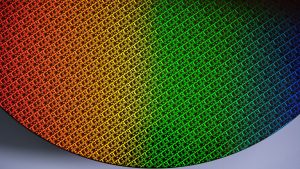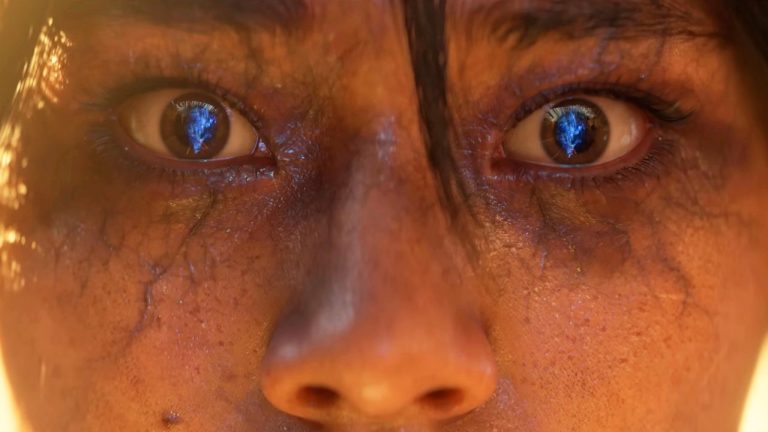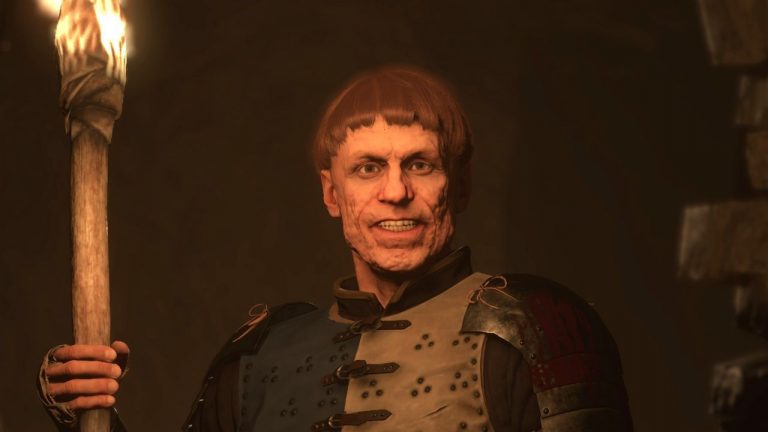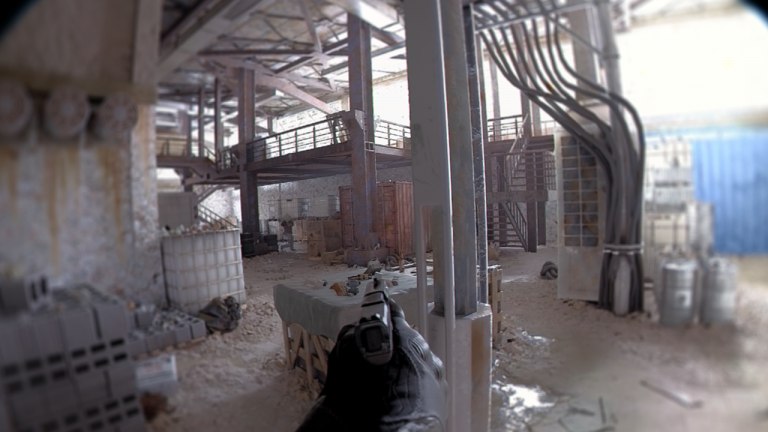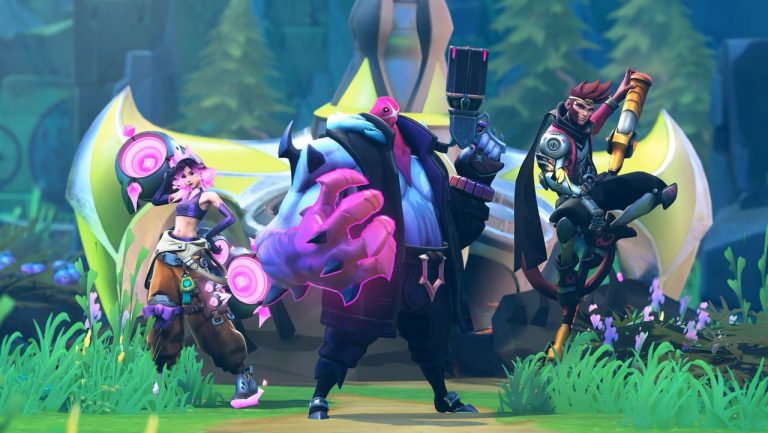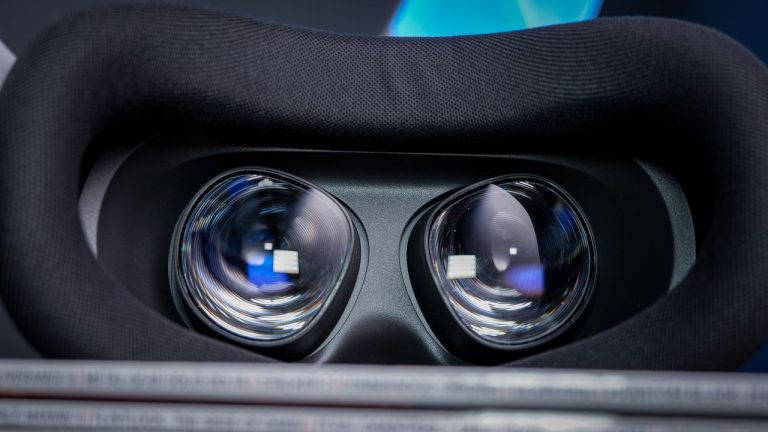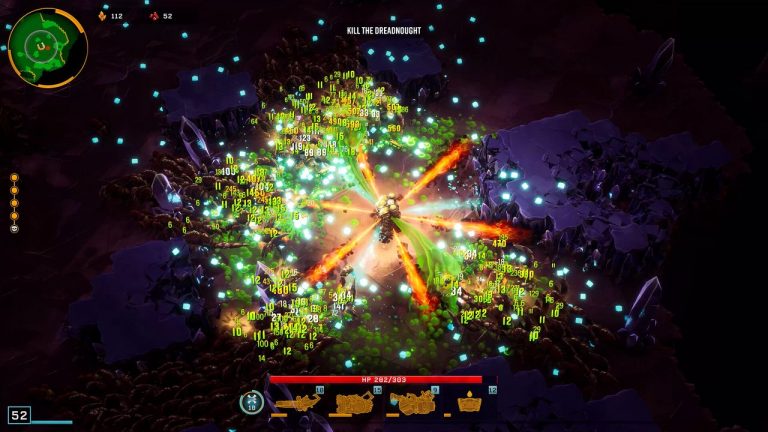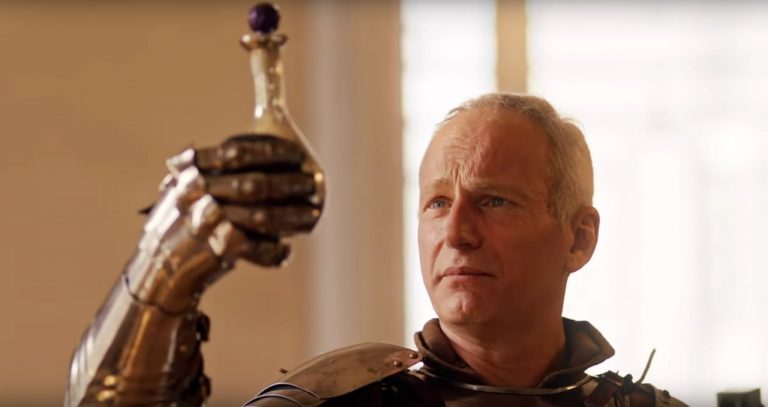A Warhammer 40,000 space marine is not just your usual sci-fi super soldier. They are hulking behemoths, 10 feet tall (and about 10 feet wide too). They don’t move like people, they move like freight trains. They have the physical bearing of an industrial freezer unit and the emotional intelligence of a crocodile. They do not retreat and they do not surrender, and their 9-to-5 is fighting the worst things you can possibly imagine over and over in a completely futile forever-war.
Conveying the scale, heft, and absurdity of Games Workshop’s grimdark mascots in a videogame is not easy. The original Space Marine game is fondly remembered precisely because it really understood all that, but that was over a decade ago (and, officially, space marines have gotten even larger since then). Its upcoming sequel has a really difficult task ahead of it, trying to pull off that same trick for modern audiences—and it’s coming from a different studio, Saber Interactive, which has a fairly uneven track record. Heading into my first hands-on with Space Marine 2, I was pretty sceptical, but four hours of singleplayer and co-op later, I not only think the developer has nailed it, I think it’s made something even more authentic to the Warhammer 40,000 universe than the first game.
My hands-on starts with a simple walk-and-talk through a military camp with my two squadmates, but even just plodding along I already get a sense of the weight and presence of returning protagonist Titus. Loyal Cadian soldiers busy themselves around us as we go, regular humans that provide an idea of scale as we casually tower over them. I feel big.
But then I step out into the warzone. I see how unfathomably huge the city we’re fighting over is, buildings reaching up into the sky and sprawling in every direction. I see the hordes of insectile tyranids, swarming in unimaginable numbers all the way to the horizon. I see the beasts leading them, great masses of muscle and chitin. I feel small.
The marriage of faithful art design with some frankly incredible tech for realising enemy swarms immediately sells the grand absurdity of Warhammer 40,000. I’m the scariest, most powerful thing in the room, but I’m still just a tiny speck in this war, and the universe is full of even scarier, more powerful things getting ready to barge their way into that room at any moment.
(Image credit: Saber Interactive)
The combat walks that same line—it’s a power fantasy, but a dangerous one. Armed with a gun approximately the size of a train carriage, and a sword that’s also a chainsaw, I sweep through the lesser tyranid hordes like a hot knife through angry butter. But striding amongst the swarm are heavier hitters—snipers firing globs of glowing venom, warriors with deadly bone swords, chameleonic predators, and gigantic carnifexes that dwarf even Titus. When I start taking hits, there’s no cover to retreat to. The only way forward is through, forcing me to get more aggressive the more cornered I feel.
There are some rough edges here, for sure. The parry system feels inconsistent—sometimes giving you warning indicators so flashy they feel oddly disconnected from the action, other times seeming to just expect you to spot one incoming attack animation amidst a whole tide of claws and teeth. It’s also strangely stingy with ammo and grenades. Armed with a death-spewing mega-gun and faced with a tidal wave of bugs, I want to just be blasting with wild abandon, not worrying about running out of bullets before the next cache. But it’s all things that could be ironed out or improved before launch or in subsequent patches, and the overall rhythm and feel of combat is so distinctive and evocative that its problems don’t drag it down.
As in the first game, executions are key. When an enemy is staggered, you can run up and trigger a canned death animation—usually tearing them apart with your bare hands, or impaling them on their own claw-limbs—in order to recover your armour bar to block incoming hits. I’m particularly charmed by the fact that your computer-controlled allies will deliberately not perform executions until the last possible minute, just in case you need them. “Oh no, after you, I insist,” I imagine them saying, like the galaxy’s most polite mass-murderers.
(Image credit: Saber Interactive)
Introducing that shadow of internal conflict helps get across the dark morality of the space marines that most adaptations simply ignore.
But while your chums are very gracious in combat, during the section I play there’s a lovely simmering tension between them outside of fights. Titus is under suspicion from his comrades for his encounters with Chaos in the first game—they fear he’s been corrupted, and as it becomes increasingly clear there are cultists of the dark god Tzeentch at work in the midst of this war, those fears grow.
The growly dialogue between them as one subordinate in particular questions the very purpose of their mission is surprisingly effective. Introducing that shadow of internal conflict helps get across the dark morality of the space marines that most adaptations simply ignore. These are not knights in shining armour—they save lives, but they also fight to uphold an oppressive regime that rules through fear. Seeing that fear creeping into even their own minds is refreshing.
It’s just one way that Space Marine 2 shows off that it really gets Warhammer 40,000. In addition to the scale of things, it also embraces the darkness and, importantly, the absurdity. Warhammer should always be at least as ridiculous as it is cool, and here little moments of humour perfectly puncture the gravitas—like an audio log where a bridge architect proudly boasts that his construction will outlive him by 10,000 years, found shortly after you’ve just blown it up.
(Image credit: Saber Interactive)
Charging around like three deadly garbage trucks is just good, silly fun, and there probably doesn’t need to be much more to it than that.
These elements aren’t just set-dressing, they inform the storytelling and the action. The entire single-player portion of my hands-on revolves around simply trying to send a message off-world to Titus’ commander. In most sci-fi settings, they’d just use a wrist-communicator, or perhaps have to reach a relay and switch it on. Here, they must fight their way to a group of tortured psychics and force them to try and send the message telepathically despite warnings that daemonic presences and the crippling psychic shadow of the tyranid hive mind make it suicidal. It uses the grimdark silliness of the Warhammer universe—where even a phone call has a cost in human lives—to drive more tension and excitement in the story.
Hopping over to the co-op mode, it’s a pleasure to discover that that sharp writing continues. Each of the space marine classes you can play in the three-player missions is a named character, and the missions you perform actually happen parallel to the singleplayer story. As Titus is fighting his way to his objective, he keeps in touch with allies on the comms who are trying to assassinate a hive tyrant (a tyranid battlefield commander) and break the back of the enemy’s leadership to give him an opening. In the co-op, you carry out that mission, and it all feels that much more consequential as a result.
It’s not as nuanced as a lot of co-op games available today—it feels like it’s lacking variety in its equivalents of Left 4 Dead’s special infected, and there’s not much mechanical depth to the teamwork beyond the melee guy charging forward while the ranged guy offers fire support. But again, it’s all in the vibes. Charging around like three deadly garbage trucks is just good, silly fun, and there probably doesn’t need to be much more to it than that.
(Image credit: Saber Interactive)
With even more enemies and even bigger boss fights, and all the same visual spectacle as singleplayer, it feels like an already over-the-top game at its most exuberant. And the classes—each much more specialised than jack-of-all-trades Titus—dig deeper into the different facets of the space marine power fantasy. Sprinting into battle and swinging a chainsaw around is fun, but you know what’s even more fun? Leaping into the air with your jetpack, slamming down onto an alien’s face, and then smashing his mate to bits with a crackling thunder hammer that makes you feel like Thor, But Bigger. Ditto unleashing pure ranged carnage as the Heavy class, or battering back the tide with a shield the size of a boat as the Vanguard.
That feel, both of the weight and power of a space marine, and of the grim yet hilarious atmosphere of Warhammer 40,000, is the thing I worried Space Marine 2 would get wrong. This hands-on has put any such fears to rest. It’s not the tightest action game I’ve ever played, and I doubt its co-op will get its hooks into me like Darktide, but it’s shaping up to a seriously impressive realisation of the setting—a slice of pure spectacle and chaotic fun sure to please any Warhammer fan.


